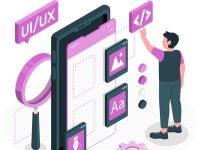Shrink a File Size of JPEG or PNG Free
Easily compress JPEG and PNG images without quality loss. Drag & drop or upload your photo to reduce its size instantly. All uploaded images are securely deleted after 30 minutes to protect your privacy.
Compress Your Image
Original Image
Size:
How to Shrink a File Size of JPEG: Your Ultimate Guide to Image Optimization
Unlock faster loading times, better SEO, and seamless sharing by mastering JPEG compression.
In today's digital world, images are everywhere. From stunning photographs on personal blogs to product shots on e-commerce sites, JPEGs are the workhorse of web imagery. However, large JPEG files can significantly slow down your website, frustrate visitors, and even hurt your search engine rankings. That's why learning how to shrink a file size of JPEG is not just a technical task—it's a crucial skill for anyone operating online.
This comprehensive guide will walk you through everything you need to know about reducing the size of your JPEG images, ensuring they look great while performing optimally. We'll cover the 'why,' the 'how,' and the best practices to help you achieve the perfect balance between quality and file size.
Why You Absolutely Need to Shrink a File Size of JPEG
You might be wondering, "Why bother with image compression?" The answer lies in the profound impact large images have on various aspects of your digital presence. Understanding these reasons will underscore the importance of taking action to shrink a file size of JPEG images.
1. Boost Website Loading Speed

This is perhaps the most critical reason. Website visitors have notoriously short attention spans. If your page takes more than a few seconds to load, they're likely to hit the back button. Large, unoptimized images are often the biggest culprits behind slow loading times. By learning to shrink a file size of JPEG, you directly contribute to a snappier, more enjoyable user experience. Faster sites mean happier users and lower bounce rates.
2. Improve Search Engine Optimization (SEO)

Google and other search engines prioritize fast-loading websites. Page speed is a confirmed ranking factor. If your site is sluggish due to bulky JPEGs, search engines might penalize you, pushing your content further down the search results. Optimizing your images by reducing their file size is a simple yet effective way to signal to search engines that your site offers a superior user experience, potentially leading to higher rankings and more organic traffic.
3. Enhance User Experience (UX)

Beyond just speed, optimized images provide a better overall experience. Users on mobile devices, or those with slower internet connections, will particularly appreciate images that load quickly and don't consume excessive data. A seamless visual experience keeps users engaged with your content longer, whether they're browsing a gallery or reading an article.
4. Save Storage Space and Bandwidth

For website owners, smaller image files mean less server storage consumed and reduced bandwidth usage. This can translate into cost savings, especially for sites with high traffic or a vast number of images. For individuals, it means more space on your hard drive or cloud storage, and quicker email attachments.
5. Facilitate Quicker Sharing

Trying to email a high-resolution photo only to find it's too large for your email provider? Or perhaps you want to upload a batch of photos to social media but the process is painfully slow. When you shrink a file size of JPEG, sharing becomes a breeze. Smaller files upload faster, making your workflow more efficient.
Understanding JPEG Compression: Quality vs. Size
JPEG (Joint Photographic Experts Group) is a "lossy" compression format. This means that when you compress a JPEG, some data is permanently discarded. The goal is to remove data that is least noticeable to the human eye, thus reducing file size while maintaining acceptable visual quality. The key is finding the right balance.
The Compression Ratio
When you shrink a file size of JPEG, you're essentially adjusting its compression ratio. A higher compression ratio means a smaller file size but a greater loss of detail, which can lead to artifacts or pixelation. A lower compression ratio retains more detail but results in a larger file. Most tools allow you to specify a quality level, typically on a scale of 0-100 or 0-12.
Effective Methods to Shrink a File Size of JPEG
There are several powerful ways to reduce the size of your JPEG images. Let's explore the most common and effective methods.
1. Using Online Image Compression Tools (Recommended)
This is often the easiest and quickest way to shrink a file size of JPEG. Many websites, including ours, offer free online tools that allow you to upload your images, choose a compression level (or let the tool do it automatically), and download the optimized version. These tools are user-friendly, require no software installation, and are perfect for quick, efficient compression.
How it works: You simply drag and drop your JPEG files, the tool processes them using advanced algorithms, and you get a significantly smaller file back, often with minimal perceptible quality loss. This is ideal for webmasters, bloggers, and anyone needing fast results.
2. Desktop Image Editing Software
Professional image editing software like Adobe Photoshop, GIMP (free and open-source), and Affinity Photo offer robust options for image compression. These tools give you granular control over quality settings, dimensions, and other parameters when you save or export your images.
- Adobe Photoshop: Use "File > Export > Save for Web (Legacy)" or "File > Export > Export As..." to fine-tune JPEG quality, dimensions, and even remove metadata.
- GIMP: When exporting as JPEG, GIMP provides a quality slider and options for progressive encoding and metadata removal.
While these tools offer maximum control, they require software installation and a steeper learning curve compared to online alternatives.
3. Resizing Image Dimensions
Often, images are uploaded at resolutions far higher than needed for web display. A photo taken with a modern smartphone or DSLR might be 4000 pixels wide, but your website might only display it at 800 pixels. Reducing the actual pixel dimensions of an image is one of the most effective ways to shrink a file size of JPEG drastically, as it reduces the total number of pixels that need to be stored.
Always resize your images to the maximum dimensions they will be displayed on your website or platform before compressing them. This alone can cut file sizes by a significant margin.
4. Removing Metadata
JPEG files often contain metadata (EXIF data) such as camera model, date and time, location (GPS coordinates), and even copyright information. While useful in some contexts, this data adds to the file size and is usually unnecessary for web images. Many compression tools and image editors offer an option to strip this metadata, further helping you to shrink a file size of JPEG.
5. Progressive JPEG Encoding
When saving JPEGs, you might encounter an option for "progressive" encoding. A progressive JPEG loads in successive waves of detail, starting with a blurry version and gradually refining it until the full image appears. This provides a better user experience on slower connections compared to "baseline" JPEGs, which load from top to bottom. While it doesn't significantly reduce file size, it can make the perceived loading time feel faster.
Practical Applications: Where to Shrink a File Size of JPEG
Knowing how to compress JPEGs is valuable across many digital activities:
- Websites and Blogs: Essential for fast loading, SEO, and user engagement.
- E-commerce Stores: High-quality, fast-loading product images are crucial for conversions.
- Social Media: Uploading optimized images ensures they look good and load quickly on various platforms.
- Email Attachments: Avoid bounce-backs and send large batches of photos easily.
- Digital Portfolios: Showcase your work without compromising loading speed for potential clients.
Comparative Table: JPEG Compression Impact
To illustrate the effect of different compression levels and methods, consider the following typical scenarios. These figures are approximate and can vary based on the original image content and the specific compression algorithm used, but they provide a good general idea of how much you can shrink a file size of JPEG.
| Original Image Scenario | Typical Original Size | Compression Method/Target | Estimated New Size | Approx. Reduction | Visual Quality Impact |
|---|---|---|---|---|---|
| High-Res DSLR Photo (4000px wide) | 5 MB | Resize to 1200px wide, Quality 80% | 200-400 KB | 92-96% | Minimal to good for web |
| Smartphone Photo (3000px wide) | 3 MB | Resize to 800px wide, Quality 75% | 100-250 KB | 92-96% | Good for web/social media |
| Web Banner (1920px wide) | 1.5 MB | Quality 70% (same dimensions) | 300-500 KB | 67-80% | Slightly noticeable on fine details |
| Small Thumbnail (300px wide) | 150 KB | Quality 60% (same dimensions) | 20-40 KB | 73-87% | Acceptable for small sizes |
| Product Image (1000px wide) | 800 KB | Quality 85%, Strip Metadata | 150-250 KB | 69-81% | Very good, nearly original |
As you can see, the potential to significantly shrink a file size of JPEG is enormous, often with very little impact on the perceived quality, especially when viewing images on a screen rather than in print.
Ready to Shrink Your JPEG File Sizes?

Optimizing your images is no longer optional; it's a fundamental requirement for a successful online presence. By taking the time to shrink a file size of JPEG images, you're investing in a faster, more user-friendly, and SEO-friendly website.
Our powerful online image compression tool is designed to make this process incredibly simple and efficient. Just upload your PNG, JPEG, or JPG files, and let our advanced algorithms do the heavy lifting, delivering beautifully optimized images in seconds. Need to convert JPG to PNG? We've got you covered there too! Start improving your website's performance and user experience today!